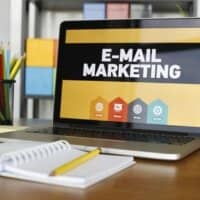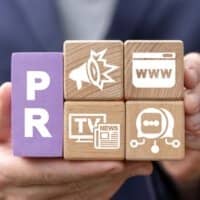One of the most effective ways to engage and communicate with your target audience is still through email marketing. To make your emails stand out in a congested inbox, you must take a systematic approach when creating effective campaigns. In this blog, we’ll explore when to use email marketing tips, its benefits, industry-specific statistics, and practical tips for creating successful email campaigns.
When to Use Email Marketing?
Email marketing is flexible and may be applied to a range of situations in order to meet a range of company goals.
Promotional Campaigns: Announce new products, sales, or special offers to drive immediate purchases.
Newsletters: Inform your audience about business updates, market developments, and insightful observations. 81% of B2B marketers say email newsletters are their most used form of content marketing.
Customer Retention: Nurture relationships with existing customers through personalized content and exclusive offers.
Lead Nurturing: Lead prospective clients through the sales funnel using offers that are pertinent and instructional content.
Event Invitations: Promote webinars, workshops, or live events to increase attendance and engagement.
Benefits of Email Marketing
Email marketing offers numerous benefits, making it an essential component of any digital marketing strategy:
Cost-Effective: Email marketing is one of the most affordable marketing channels, offering a high return on investment (ROI).
Direct Communication: Make sure the people you intend to reach see your message by contacting them directly in their inboxes. 99% of consumers check their email every day.
Personalization: Tailor your messages to individual preferences and behaviors, increasing engagement and conversion rates.
Measurable Results: Monitor important indicators like conversions, open rates, and click-through rates to evaluate how successful your campaigns are.
Scalability: You may easily grow your email marketing campaigns to reach a larger audience as your business grows.
Email Marketing Stats by Industry
Understanding industry-specific email marketing statistics can help you benchmark your performance and set realistic goals.
Email Marketing Stats for E-commerce
Email marketing is a major tool used by e-commerce companies to increase sales and foster client loyalty. Here are some key statistics:
- Conversion Rates: 2.01 % is the average conversion rate for e-commerce email marketing.
- Open Rates: E-commerce emails have an average open rate of 15.68%.
- Click-Through Rates: The average click-through rate for e-commerce emails is 2.25%.
- Cart Abandonment: Emails targeting cart abandonment can recover up to 11.6% of abandoned carts.
Email Marketing Stats for B2B
Business-to-business (B2B) email marketing focuses on lead generation and nurturing. Key statistics include:
Open Rates: B2B emails have an average open rate of 20.56%.
Click-Through Rates: The average click-through rate for B2B emails is 3.26%.
Lead Generation: Email is the third most influential source of information for B2B audiences, behind colleague recommendations and industry-specific thought leaders.
ROI: B2B marketers see an average ROI of 122% from email marketing.
Email Marketing Stats for B2C
Business-to-consumer (B2C) email marketing aims to drive consumer engagement and sales. Key statistics include:
Open Rates: B2C emails have an average open rate of 18.39%.
Click-Through Rates: The average click-through rate for B2C emails is 2.06%.
Personalization: Personalized email campaigns can increase the success of your campaigns.
Engagement: Weekly promotional emails from their favorite brands are desired by 49% of consumers.
Email Marketing Tips and Strategies
Effective email marketing campaigns involve several key strategies to maximize engagement and conversions.
Build a Quality Email List of Engaged Subscribers
Focus on growing a high-quality email list with subscribers who are genuinely intrigued by your products or services. Use sign-up forms, lead magnets, and incentives to attract engaged subscribers.
Segment Your Email List for Targeted Campaigns
Segment your email list according to preferences, activity, and demographics to deliver more individualized and pertinent information. The open rate of segmented campaigns might be 14.31% greater than that of non-segmented campaigns.
Personalize Your Emails with Dynamic Content
Your emails can be personalized by using dynamic content that depends on subscriber information like name, location, and previous purchases. Six times more transactions occur as a result of personalized emails.
Use Attention-Grabbing Subject Lines
Craft compelling subject lines that capture attention and encourage recipients to open your emails. To find the subject line that connects with your audience the most, A/B tests several variations.
Optimize Your Email Design for Mobile Devices
It’s critical to optimize your email design for mobile consumers, as over 50% of emails are opened on mobile devices. Use responsive design, concise content, and clear CTAs to ensure a seamless mobile experience.
Include a Clear Call-to-Action (CTA)
A strong call to action (CTA) should be included in every email to direct recipients toward the intended action. Use action-oriented language and make your CTA stand out visually.
Test and Measure Your Email Campaigns
To maximize success, test various aspects of your email campaigns on a regular basis, including pictures, CTAs, and subject lines. Measure important metrics with analytics tools, then modify your plan of action in light of the findings.
Automate Your Email Campaigns
Automate repetitive tasks like welcome emails and follow-up sequences to save time and ensure consistency. Automated emails generate 320% more revenue than non-automated emails.
Keep Your Email Frequency Consistent
Maintain a consistent email frequency to stay in mind with your subscribers without overwhelming them. Determine the optimal frequency based on your audience’s preferences and engagement levels.
Provide Valuable Content
Focus on delivering valuable content that addresses your audience’s needs and interests. This can include educational articles, industry insights, and exclusive offers. Valuable content builds trust and keeps subscribers engaged.
Conclusion
An effective strategy for connecting with and interacting with your audience is email marketing. With a thorough awareness of industry-specific statistics, the advantages of email marketing, and when to utilize it, you can develop campaigns that effectively drive outcomes. Implementing strategies such as building a quality email list, segmenting your audience, personalizing content, and optimizing for mobile devices will help you maximize the impact of your email marketing efforts. Regularly testing, measuring, and automating your campaigns will ensure long-term success and growth.
By following these email marketing tips, draw in customers, encourage interaction, and result in conversions. Accept the potential of email marketing to establish relationships with your customers, further your business objectives, and connect with them.
























